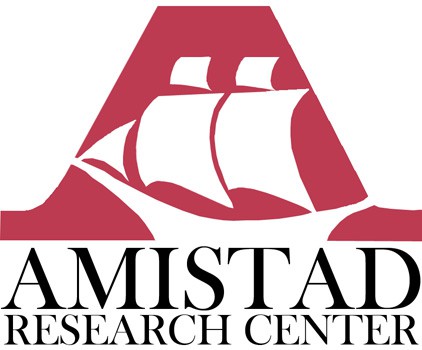The Amistad Research Center is a wonderful resource for researchers interested in African American musicians and vocal artists. The Center holds the personal papers of concert and operatic stars such as William Warfield, Carol Brice, Anne Wiggins Brown, Camilla Williams, Annabelle Bernard, Mattiwilda Dobbs, and Thomas Carey. Jazz music is well-documented in the papers of Ellis Marsalis Jr. and Harold Battiste, while the topic of music education is found within the papers of Lucile Hutton and Mildred Katharine Ellis. And there is so much more.
Amistad is currently expanding its music-related collections into new genres — hiphop and bounce music. Recent donations, described below, have placed the Center at the forefront of efforts to document and preserve materials that chronicle the development of these genres in New Orleans.
Holly Hobbs, a Ph.D. student at Tulane University working on a dissertation on post-Katrina New Orleans hiphop and recovery has begun donating video interviews gathered as part of The NOLA Hiphop Archive. The Archive was founded in 2012 as an effort to collect, document, and make accessible to the public the oral histories of New Orleans’ influential rappers, producers and DJs who helped to create and popularize hiphop and bounce music traditions in the city and beyond. The collection currently holds more than 30 videotaped interviews with the city’s hiphop and bounce artists and pioneers, including Mannie Fresh, Mystikal, Partners N Crime, Dee-1, Ricky B, DJ Raj Smoove, Nesby Phips, Nicky da B & Rusty Lazer, and Queen Blackkold Madina, star of the Academy Award-winning Katrina documentary, Trouble theWater.
Complementing the Hiphop Archive is a portion of audio interviews recorded as part of the Where They At bounce project. The Where They At project was begun in 2008 by photographer Aubrey Edwards and journalist Alison Fensterstock, with the assistance of a grant from the Greater New Orleans Foundation. It collected over 50 photographic portraits and audio interviews with New Orleans rappers, DJs, producers, photographers, label owners, promoters, record store personnel, journalists and other parties involved in the New Orleans hip-hop and bounce scene from the late 1980s through Hurricane Katrina, as well as ephemera including original fliers, posters, vintage photographs and an extensive collection of record, CD and cassette tape scans. In a multimedia exhibition form, Where They At was presented at the Smithsonian-affiliated Ogden Museum of Southern Art, the New Orleans Jazz and Heritage Festival, Austin’s Birdhouse Gallery and SXSW festival, Minneapolis’ Soap Factory, New York City’s Abrons Art Center and the Direktorenhaus in Berlin, Germany. It currently lives in online form at wheretheyatnola.com. Amistad currently houses 19 audio interviews and 37 interview transcripts as part of the Where They At collection.
Preliminary descriptions of the collections at Amistad can be found in Amistad’s online finding aid database: NOLA Hiphop Archive Project Collection and Where They At Collection. In Spring 2014, Amistad will work with our donors and Tulane University’s Digital Library to launch the community-accessible NOLA Hiphop and Bounce Archive , which will provide online access to the NOLA Hiphop Archive video interviews and portions of the Where They At audio interviews.
To support this digital initiative and to assist in the collection of an additional 30 new videotaped oral histories, a Kickstarter campaign has been launched by the NOLA Hiphop Archive. A portion of the proceeds of this campaign will assist with the foundation of a public audiovisual station in Amistad’s Reading Room. With its “all-or-nothing” funding model, Kickstarter campaigns are limited in time and in the targeted funding amount. With a goal of concluding the campaign prior to the Christmas holiday, an expedited 20-day campaign is being conducted. Please consider donating, sending to your friends and family, sharing via social media, or any other assistance you are able to provide. A donation of any amount toward the successful goal will help to further document and provide support and recognition for these important members of the New Orleans creative community and beyond. More info on the NOLA Hiphop Archive is available via the video below.
Posted by Christopher Harter










